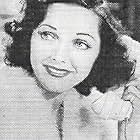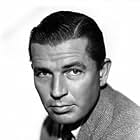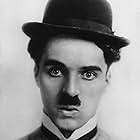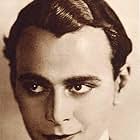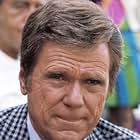Comedian Lloyd Hamilton escorts a group of beauty contest winners to various Hollywood night spots.Comedian Lloyd Hamilton escorts a group of beauty contest winners to various Hollywood night spots.Comedian Lloyd Hamilton escorts a group of beauty contest winners to various Hollywood night spots.
Jessica Stewart Sargent
- Self
- (archive footage)
Ben Alexander
- Self
- (archive footage)
- (uncredited)
Adrienne Ames
- Self
- (archive footage)
- (uncredited)
Stella Bailey
- Self
- (uncredited)
Richard Barthelmess
- Self
- (archive footage)
- (uncredited)
Bruce Cabot
- Self
- (archive footage)
- (uncredited)
Charles Chaplin
- Self
- (archive footage)
- (uncredited)
William Collier Jr.
- Self
- (archive footage)
- (uncredited)
Russ Columbo
- Self
- (archive footage)
- (uncredited)
Gary Cooper
- Self
- (archive footage)
- (uncredited)
Jackie Cooper
- Self
- (archive footage)
- (uncredited)
Buster Crabbe
- Self
- (uncredited)
Agnes Craney
- Self
- (uncredited)
Richard Cromwell
- Self
- (archive footage)
- (uncredited)
Cecil B. DeMille
- Self
- (archive footage)
- (uncredited)
Jack Dempsey
- Self
- (archive footage)
- (uncredited)
Storyline
Did you know
- GoofsNarrator Bill Henry refers to someone being costumed as Lionel Barrymore in Svengali (1931), though it was John Barrymore who starred in that film.
- ConnectionsReferences I'm No Angel (1933)
Featured review
Watching the entries from this series is like watching someone's home movies, only the settings aren't the usual family picnics and graduation ceremonies. The cinematic scrapbook that comprises the "Hollywood on Parade" series is filled with rare footage of movie stars behind the scenes and at play: attending premieres, going to parties or public events, or just goofing around for the camera. Because the series was distributed by Paramount the stars who get the most attention tend to be that studio's contract players, but others pop up as well, sometimes celebrities from the worlds of sports or politics. There's usually a half-baked attempt to give the various sequences a thematic link of some sort, but the whole point of the enterprise is to watch these famous folk as they purportedly let their hair down and give the public a sense of what they're "really" like. Movie buffs who enjoy the Hollywood product of this period will find the films fascinating, and perhaps a little poignant.
This particular entry begins as a gaggle of young women, winners of the Search for Beauty contest, are met at a train station by Larry 'Buster' Crabbe. He's supposed to escort them to their hotel, but the girls announce that they'd prefer to sample some of that Hollywood nightlife they've heard so much about. "Why, don't make me laugh, girls," intones Crabbe in his endearingly awkward way. "Hollywood is a nine o' clock town." The girls are skeptical. Fortunately, comedian Lloyd Hamilton arrives at this juncture. He's just purchased a new camera, and is planning to try it out at three public events, so the contest winners happily tag along.
The group's first destination is Grauman's Chinese Theatre, just in time for the gala premiere of Mae West's new picture I'M NO ANGEL. And as with an Oscars pre-show telecast nowadays, the fun part is seeing the celebrities step out of their limos and promenade into the theater. Some of them pause long enough to step up to the microphones and address radio listeners: Jack Oakie mumbles a brief and indecipherable anecdote, but George Raft crisply delivers a tribute to his erstwhile co-star Mae. Then the lady herself arrives with her entourage, and greets theater owner Sid Grauman. She sashays over to the mike and encourages the crowd to enjoy her movie, adding: "Of course I didn't call it 'I'm No Angel' for nothing. Don't forget, come up and see me sometime." And with that, it's on to the show! In the next segment Hollywood history is saluted, as director Cecil B. DeMille and a few colleagues visit a humble barn at the corner of Sunset and Vine, the site where most of the interiors for his first project were filmed 20 years earlier. That debut THE SQUAW MAN is generally recognized as the first feature film produced in Hollywood, and the barn where it was made appears to have been spruced-up for this occasion. (Sadly, the building was torn down long ago and replaced by a bank.) During this brief sequence DeMille makes small talk with Jack Holt, who was featured in the 1918 remake of THE SQUAW MAN, character actor Raymond Hatton, who had a small role in the 1914 version, and several younger actors.
In the final sequence we are treated to footage of prominent players attending a costume party with a cute theme: at this event, stars impersonate other stars. Thus, Polly Moran is disguised as Anna May Wong, Buster Collier is dressed as Mickey Mouse, Fredric March impersonates comedian Bobby Clark, etc. Fay Wray simply appears as herself in her most famous role, although the relationship with her famous co-star is reversed. (Hint: she carries a toy gorilla.) Gloria Swanson impersonates Helen Hayes in her recent release THE WHITE SISTER, which means we get to see how Miss Swanson looks in a nun's habit. Three of the Four Marx Brothers appear at the party, though they arrive separately. Zeppo inexplicably wears a jacket festooned with toupees, so it's anyone's guess who or what he was meant to represent. The unidentified narrator quips "Toupee or not toupee," which doesn't help matters. Chico is elaborately dressed in a sinister Mr. Hyde-like costume; the narrator suggests that's he's one of the witches of Endor "but we don't know which end," which isn't much better than the toupee quip. Groucho shows up with Gary Cooper, who is disguised as a rustic with a scraggly beard. (Even the narrator isn't sure who Coop is supposed to be.) Groucho wears street clothes and a sign reading Rex the Wonder Horse, which suggests he wasn't really in the mood for a costume party. For the grand finale, our host Lloyd Hamilton reappears as Baby LeRoy, accompanied by those beauty contest winners dressed as nurses.
This novelty item can be found as an extra in the recent multi-disc DVD set devoted to the work of Lloyd "Ham" Hamilton, who made one of his last appearances here. In his role as hapless photographer Ham attempts to perk things along, performing a few simple sight gags along the way, but the real point of this short is to catch glimpses of the stars. Star-gazers with a special interest in the Hollywood of the '30s will likely get a kick out of it.
This particular entry begins as a gaggle of young women, winners of the Search for Beauty contest, are met at a train station by Larry 'Buster' Crabbe. He's supposed to escort them to their hotel, but the girls announce that they'd prefer to sample some of that Hollywood nightlife they've heard so much about. "Why, don't make me laugh, girls," intones Crabbe in his endearingly awkward way. "Hollywood is a nine o' clock town." The girls are skeptical. Fortunately, comedian Lloyd Hamilton arrives at this juncture. He's just purchased a new camera, and is planning to try it out at three public events, so the contest winners happily tag along.
The group's first destination is Grauman's Chinese Theatre, just in time for the gala premiere of Mae West's new picture I'M NO ANGEL. And as with an Oscars pre-show telecast nowadays, the fun part is seeing the celebrities step out of their limos and promenade into the theater. Some of them pause long enough to step up to the microphones and address radio listeners: Jack Oakie mumbles a brief and indecipherable anecdote, but George Raft crisply delivers a tribute to his erstwhile co-star Mae. Then the lady herself arrives with her entourage, and greets theater owner Sid Grauman. She sashays over to the mike and encourages the crowd to enjoy her movie, adding: "Of course I didn't call it 'I'm No Angel' for nothing. Don't forget, come up and see me sometime." And with that, it's on to the show! In the next segment Hollywood history is saluted, as director Cecil B. DeMille and a few colleagues visit a humble barn at the corner of Sunset and Vine, the site where most of the interiors for his first project were filmed 20 years earlier. That debut THE SQUAW MAN is generally recognized as the first feature film produced in Hollywood, and the barn where it was made appears to have been spruced-up for this occasion. (Sadly, the building was torn down long ago and replaced by a bank.) During this brief sequence DeMille makes small talk with Jack Holt, who was featured in the 1918 remake of THE SQUAW MAN, character actor Raymond Hatton, who had a small role in the 1914 version, and several younger actors.
In the final sequence we are treated to footage of prominent players attending a costume party with a cute theme: at this event, stars impersonate other stars. Thus, Polly Moran is disguised as Anna May Wong, Buster Collier is dressed as Mickey Mouse, Fredric March impersonates comedian Bobby Clark, etc. Fay Wray simply appears as herself in her most famous role, although the relationship with her famous co-star is reversed. (Hint: she carries a toy gorilla.) Gloria Swanson impersonates Helen Hayes in her recent release THE WHITE SISTER, which means we get to see how Miss Swanson looks in a nun's habit. Three of the Four Marx Brothers appear at the party, though they arrive separately. Zeppo inexplicably wears a jacket festooned with toupees, so it's anyone's guess who or what he was meant to represent. The unidentified narrator quips "Toupee or not toupee," which doesn't help matters. Chico is elaborately dressed in a sinister Mr. Hyde-like costume; the narrator suggests that's he's one of the witches of Endor "but we don't know which end," which isn't much better than the toupee quip. Groucho shows up with Gary Cooper, who is disguised as a rustic with a scraggly beard. (Even the narrator isn't sure who Coop is supposed to be.) Groucho wears street clothes and a sign reading Rex the Wonder Horse, which suggests he wasn't really in the mood for a costume party. For the grand finale, our host Lloyd Hamilton reappears as Baby LeRoy, accompanied by those beauty contest winners dressed as nurses.
This novelty item can be found as an extra in the recent multi-disc DVD set devoted to the work of Lloyd "Ham" Hamilton, who made one of his last appearances here. In his role as hapless photographer Ham attempts to perk things along, performing a few simple sight gags along the way, but the real point of this short is to catch glimpses of the stars. Star-gazers with a special interest in the Hollywood of the '30s will likely get a kick out of it.
Details
- Runtime9 minutes
- Color
- Sound mix
- Aspect ratio
- 1.37 : 1
Contribute to this page
Suggest an edit or add missing content

Top Gap
What was the official certification given to Hollywood on Parade No. B-5 (1933) in the United States?
Answer




